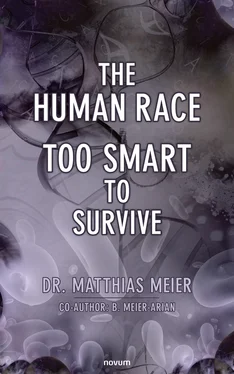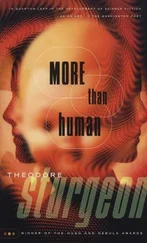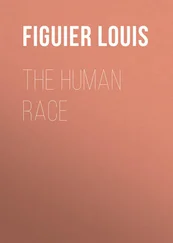Dr. Matthias Meier - The Human Race – Too Smart to Survive
Здесь есть возможность читать онлайн «Dr. Matthias Meier - The Human Race – Too Smart to Survive» — ознакомительный отрывок электронной книги совершенно бесплатно, а после прочтения отрывка купить полную версию. В некоторых случаях можно слушать аудио, скачать через торрент в формате fb2 и присутствует краткое содержание. Жанр: unrecognised, на английском языке. Описание произведения, (предисловие) а так же отзывы посетителей доступны на портале библиотеки ЛибКат.
- Название:The Human Race – Too Smart to Survive
- Автор:
- Жанр:
- Год:неизвестен
- ISBN:нет данных
- Рейтинг книги:4 / 5. Голосов: 1
-
Избранное:Добавить в избранное
- Отзывы:
-
Ваша оценка:
- 80
- 1
- 2
- 3
- 4
- 5
The Human Race – Too Smart to Survive: краткое содержание, описание и аннотация
Предлагаем к чтению аннотацию, описание, краткое содержание или предисловие (зависит от того, что написал сам автор книги «The Human Race – Too Smart to Survive»). Если вы не нашли необходимую информацию о книге — напишите в комментариях, мы постараемся отыскать её.
The Human Race – Too Smart to Survive — читать онлайн ознакомительный отрывок
Ниже представлен текст книги, разбитый по страницам. Система сохранения места последней прочитанной страницы, позволяет с удобством читать онлайн бесплатно книгу «The Human Race – Too Smart to Survive», без необходимости каждый раз заново искать на чём Вы остановились. Поставьте закладку, и сможете в любой момент перейти на страницу, на которой закончили чтение.
Интервал:
Закладка:
The mode of action of opioids is mediated by receptors found in the spinal cord and brain—our central nervous system. The transmission of pain is stopped, and dopamine is also released in the brain, which can trigger a feeling of well-being, sometimes even euphoria—a high. Opiates are obtained from the opium plant (poppy family) and belong to the narcotics family. Heroin is a synthetic derivative of morphine and is considered a highly addictive drug. Opium has played a role in various societies for centuries. Particularly well known are the Opium Wars in China (First Opium War 1839–1842, Second Opium War 1856–1860). Currently, the largest producing countries are Mexico, Colombia, Afghanistan, Iran, Pakistan, Burma, Thailand, Laos and Vietnam. Hydrocodone and oxycodone are semi-synthetic opiates produced in laboratories with natural and synthetic ingredients. In 2016, 6.2 billion oxycodone tablets were prescribed to patients in the U.S. alone (IQVIA). Between 2005 and 2015, 15% of emergency department patient visits and 3% of office-based appointments resulted in an opioid prescription. In 2015, it was reported by the International Narcotics Control Board that 99.7% of global hydrocodone use was represented by American patients.4 In 2016, the National Institute on Drug Abuse estimated that approximately half of the people addicted to heroin had previously developed an addiction to prescribed opiates, and that people who develop an addiction to prescribed opiates are 40 times more likely to become addicted to heroin.5
A brief historical account of how this came to be:
1861–1865: During the Civil War in the USA, field doctors used morphine as an analgesic on soldiers, who subsequently became addicted.
1898: Heroin is produced commercially by Bayer and was distributed to morphine addicts.
1914: The U.S. Congress decrees that opiates and cocaine become prescription drugs.
1924: Heroin is banned from both production and sale in the United States.
1970: Various opiates are divided into groups according to their dependence potential.
1980: An article was published in the New England Journal of Medicine stating that opiate addiction is rare in people treated with narcotics. This was taken as “proof” that opiates can be used safely and effectively.
1995: Oxycontin (retard opioid product of oxycodone) enters the market and is aggressively marketed (Purdue Pharma).
2007: Purdue Pharma pleads guilty to advertising the product as safer than it really was, $634.5 million in fines were paid.
2010: FDA (Federal Drug Administration) approves a new formula of Oxycontin that is supposed to make it safer and less addictive.
2015: DEA (Drug Enforcement Agency) arrests 280 people, including 22 doctors and pharmacists, after a 15-month investigation following an increase in the number of opioid prescriptions.
2016: CDC (Center of Disease Control) releases guidance on prescribing opioids to pain patients.
2017: President Donald Trump signs an executive order for the creation of a commission dedicated to the opioid problem. New Jersey Governor Chris Christie becomes chairman, and the president’s son-in-law, Jared Kushner, becomes his adviser.
April 2018: U.S. Surgeon General recommends Americans carry naloxone (works antagonistically to opiates).
May 2018: The Journal of the American Medical Association publishes a study showing that synthetic opioids such as “fentanyl” had caused 46% of opioid-associated deaths in 2016—a threefold increase since 2010.
December 2018: The CDC reports that fentanyl represents the most common opioid overdose deaths. From 2013 – 2016, the rate of overdoses from synthetic opiates increased at a rate of 113% per year.
January 2019: The National Safety Council reports it is now, for the first time, more likely to die from an opioid overdose than from a car accident.
March 2019: More than 600 cities and Native American tribes from 28 states sued eight Sackler Family members, Purdue Pharma’s senior figures, for allegedly boosting sales through manipulative marketing.
May 2019: Five executives of “Insys Therapeutics” (produce a version of fentanyl) are found guilty of bribing doctors to prescribe opioids to people who didn’t need them.
May 2019: “Teva Pharmaceuticals” agrees to pay $85 million fine in Oklahoma.
Aug. 26, 2019: “Johnson & Johnson” must pay $572 million in fines for its role in the opioid crisis in Oklahoma.
Aug. 27, 2019: NBC News reports that Purdue Pharma is offering to pay between $10 billion and $12 billion for its role in creating the crisis.
Sept. 16, 2019: The Sackler family is accused of arranging transfers of at least $1 billion to Switzerland to secure private assets. As early as 2007, $4 billion in private assets were allegedly withdrawn from the company and transferred abroad. The $12 billion settlement was rejected by the plaintiff states. Purdue files for bankruptcy.
Oct. 22, 2019: Ohio averts landmark lawsuit in last-minute $215 million settlement.
Approximately 400,000 people have died as a result of opiate abuse between 1999 and 2017. Numbing pain with analgesics without understanding or seeking its cause inevitably leads to a downward spiral that has proven particularly dramatic in the U.S., but which also had significant consequences in Germany as well. Once the prescribing physician’s budget is expended, no more opiates can be prescribed, thus the patient is then on his or her own. The patient then either endures the pain and struggles with withdrawal symptoms or goes the illegal route. Neither option poses a rosy prospect.
Most opium sold as heroin in Germany comes from Afghanistan (90% of the world’s trade) and financially benefits the Taliban. According to a BBC report, the area used to grow opium in Afghanistan has increased from 74,000 hectares in 1994 to over 300,000 hectares in 2017.6 In Germany, 34.8% of young adults have had experience with illicit drugs. Cannabis is often the drug of choice, but others are also used in 7% of cases. However, the trend is upward for all drugs. While Mexico registered 33,743 murders in 2018 and this has sadly increased to 34,582 in 2019 (4) (that’s 95 murders a day!), drug-associated crime is not as evident in this country. Nevertheless, the money generated by the sale of drugs is used to finance crime, including in Europe (5,6). One of the largest drug seizures destined for Germany occurred in Italy in November 2019, where nearly 1,200 kg of cocaine from South America was discovered in banana crates (7). The largest find across Europe occurred in Spain in April 2018, when about nine tons were found in containers.
Drugs that affect the central nervous system have been used since time immemorial. Nowadays, they are used and abused in a medical sense as strong painkillers. Many are unaware of what this means for tissue healing. For tissue to heal, three things are essential: First, the nerve supply must function well. This requires a healthy spine free of major misalignments. Second, all raw materials must be sufficiently available to form new cells: 60 minerals, 16 vitamins, 12 amino acids and 3 fatty acids as well as being free of environmental toxins. The third component, which is often overlooked, is an emotional balance. When these are all in place, the brain can repair tissue damage, which happens through an inflammatory process. People usually associate inflammation with something negative, like pain and swelling. However, what they don’t realize is that this is the body’s way of trying to heal tissue. Swelling is caused by increased blood flow or filtration of blood into, for example, a joint capsule, resulting in swelling of the affected area. Increased blood flow to a region leads to more nutrients and a better chance of healing. What do we do about it? In most cases, we take anti-inflammatory medications such as ibuprofen or Voltaren, Arcoxia or acetaminophen, which curb this very reaction. As a result, the patient experiences a decrease in swelling, and thus a decrease in pain. However, this certainly does not promote healing, because the inflammatory processes that drive healing are artificially suppressed. Some plants and spices are thought to have anti-inflammatory properties, such as turmeric. Strictly speaking, they promote inflammation or make it more effective, rather than hindering the intended healing response. Chronic inflammation is the body’s desperate attempt to heal tissue, but its effectiveness is hindered by some negative influence. Here it would be useful to locate this negative influence in order to improve the patient’s health. These reactions are also controlled by the central nervous system. The big difference between allopathic and naturopathic medicine is that the allopathic physicians believe that the body gets sick and needs help from outside (medicines, operations, etc.), while naturopathy believes in the self-healing power of the body. A bone usually heals on its own within six weeks. When we suffer a cut, it usually heals quickly without consequences and without outside help. Why shouldn’t other tissues be able to heal as well? Intestinal tissue takes 6-12 weeks for the superficial cells to all be replaced, bone cells about twelve months. Some tissues, such as cartilage, menisci or intervertebral discs, have little or no blood supply, and are therefore considered non-regenerative. But cartilage cells are also alive. If they are alive, then they also have a metabolism. If they have a metabolism, they have to absorb nutrients and dispose of waste products, and they multiply. If they can multiply, they can regenerate. We simply need to apply the right stimuli and provide the cells with nerve supply and raw materials, while removing all inhibiting influences. Sounds logical, right? It is and, strictly speaking, should be implemented in every doctor’s office. But the reality often looks different. The entire complexity and genius of our central nervous system are not sufficiently appreciated. Treating symptoms always has top priority: for back pain, injections and painkillers are standard; for high blood pressure, blood pressure medication; for osteoarthritis, surgery is performed; for depression, antidepressants are prescribed; for diabetes, insulin injections (even though too much insulin is normally already produced) or metformin or similar pills; for obesity, it is possible to reduce the size of one’s stomach surgically; for cardiac arrhythmia, options include medication, electrical/medical conversion, or even implanting a pacemaker. While all these things can alleviate a person’s symptoms, they do not address the root cause; thus, a holistic approach to therapy always seems to be the more promising one.
Читать дальшеИнтервал:
Закладка:
Похожие книги на «The Human Race – Too Smart to Survive»
Представляем Вашему вниманию похожие книги на «The Human Race – Too Smart to Survive» списком для выбора. Мы отобрали схожую по названию и смыслу литературу в надежде предоставить читателям больше вариантов отыскать новые, интересные, ещё непрочитанные произведения.
Обсуждение, отзывы о книге «The Human Race – Too Smart to Survive» и просто собственные мнения читателей. Оставьте ваши комментарии, напишите, что Вы думаете о произведении, его смысле или главных героях. Укажите что конкретно понравилось, а что нет, и почему Вы так считаете.












